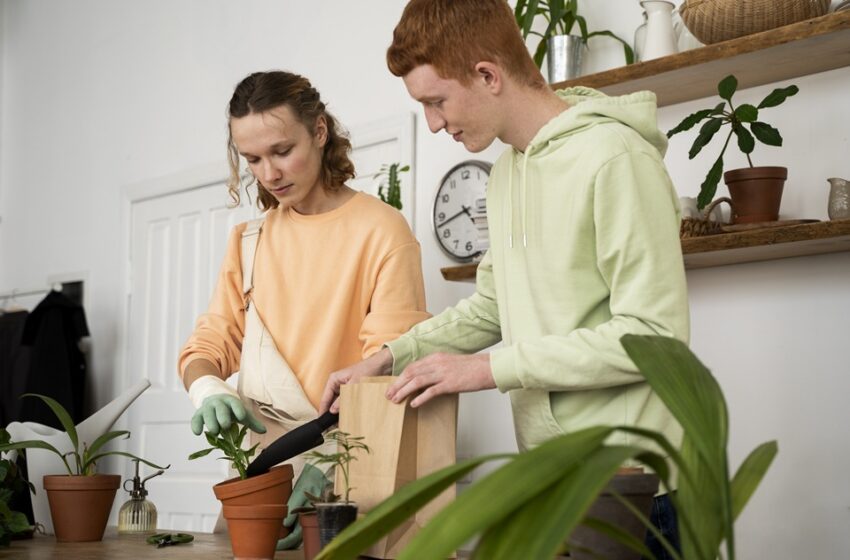Create An Eco-Friendly Home: Sustainable Living Tips

Eco-friendly homes are gaining popularity as people embrace sustainable living. Designed to reduce environmental impact, these homes feature energy-efficient appliances, renewable energy sources, and sustainable building materials. Innovations like solar panels, rainwater harvesting, and advanced insulation promote resource conservation and lower utility costs. Beyond environmental benefits, eco-friendly homes enhance indoor air quality and comfort. This shift toward sustainability reflects growing awareness of climate change and a desire for healthier, more efficient living spaces.
Introduction To Sustainable Living
Sustainable living has emerged as a cornerstone of the modern environmental movement. As cities experience rapid development, there is a growing trend towards integrating eco-friendly principles into home designs. For example, places like Atlanta are seeing a rise in New Homes Atlanta that seamlessly blends innovative green technologies with traditional architectural charm. These homes are designed with the environment in mind and substantially benefit those living there. However, understanding what makes a home eco-friendly is crucial before embarking on this path.
Eco-friendly homes use renewable energy, sustainable materials, and intelligent design to minimize environmental impact and maximize efficiency. They promote a commitment to preserve and enhance ecosystems and highlight their growing popularity.
What Makes A Home Eco-Friendly?
Energy efficiency is prioritized in constructing eco-friendly homes to lessen their adverse environmental effects. These homes use sustainable materials like bamboo, recycled steel, and reclaimed wood. They also use intelligent systems, such as solar panels and efficient appliances, to reduce energy use. These homes’ thoughtful layouts also maximize natural heat and light, which lessens the need for artificial heating and cooling. Insulating materials ensure warmth retention during colder months and coolness during warmer periods. This holistic approach is crucial for creating eco-friendly living spaces.
Benefits Of Eco-Friendly Homes
Eco-friendly homes offer numerous benefits beyond environmental concerns. They provide significant financial savings for homeowners, as energy-efficient systems lower utility bills. Even simple changes like switching to energy-efficient appliances can result in long-term savings. Eco-friendly homes also appreciate faster in value, as buyers are willing to pay a premium for green features. Additionally, they improve air quality through non-toxic building materials and advanced ventilation systems, leading to better health outcomes for residents. As a result, eco-friendly homes are increasingly attractive as living choices.
Energy-Efficient Technologies
Eco-friendly homes are characterized by the use of advanced energy-efficient technologies. Solar panels reduce the use of nonrenewable resources, transforming sunshine into electrical power. LED lighting replaces traditional incandescent bulbs, offering illumination and savings. Advanced smart thermostats allow homeowners to control heating and cooling systems remotely, adjusting settings based on occupancy and weather changes. These technologies optimize energy use and create a comfortable living environment, demonstrating a significant step towards sustainable living and integrating efficiency into daily routines.
Sustainable Building Materials
The choice of building materials is equally significant in creating sustainable homes that are truly eco-friendly. For instance, bamboo is a popular choice among builders because of its exceptional strength and quick growth rate, which makes it a perfect renewable resource. By using materials like bamboo, recycled steel, and recovered wood, builders can lessen building waste and the depletion of natural resources.
Incorporating less environmental-impact materials benefits the planet and enhances a home’s durability and aesthetics. As more people embrace sustainable architecture principles, integrating these materials into home design promises both functional and visual appeal, with a commitment to longevity and sustainability.
How To Start Building Your Eco-Friendly Home
Building an eco-friendly home involves assessing energy usage, setting practical goals, and budgeting. Consulting with eco-friendly construction experts can offer insights into sustainable practices. Start with more minor, manageable changes like replacing old appliances with energy-efficient models or installing LED lighting. These foundational improvements can lead to more significant updates like solar panels or insulation techniques, advancing towards sustainable living. Starting with more minor, manageable changes can help you achieve your sustainability goals.
Government Incentives & Support
Recognizing the importance of sustainable living, many governments offer incentives for individuals and businesses that choose eco-friendly practices. These can include tax credits, grants, and rebates, particularly for renewable energy installations like solar panels. Such financial support reduces the initial costs associated with building or renovating an eco-friendly home and accelerates the adoption of sustainable practices across communities.
Investigating the specific incentives available in your area is crucial to benefiting fully from these programs. By capitalizing on government support, homeowners can significantly mitigate the financial burden of going green, making the transition smoother and more cost-effective in the long run.
The Future Of Sustainable Living
With ongoing technological developments and rising environmental consciousness, the future offers excellent opportunities for sustainable living. As the demand for eco-friendly homes increases, materials, and design methodologies innovations continue to emerge, making sustainable housing more accessible and economically viable.
Living sustainably helps protect the environment and lays the groundwork for stronger, healthier communities. As we advance in this field, making eco-friendly homes a priority will be crucial to creating a sustainable future for coming generations. Taking steps today to make living spaces more environmentally friendly is an investment in a kinder, greener tomorrow.